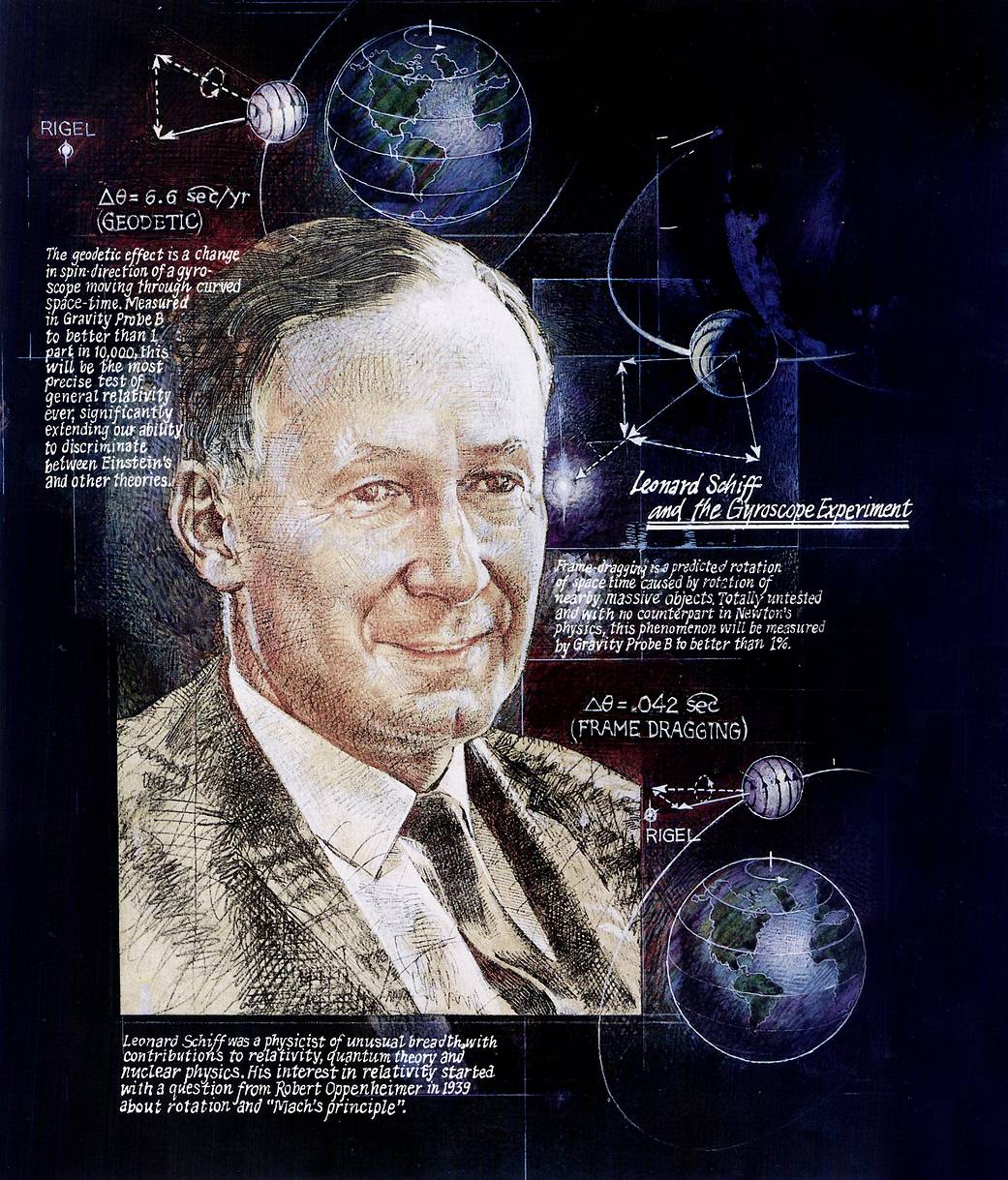For decades following its initial verification by a 1919 eclipse expedition which observed the deflection of starlight by the Sun and the proliferation of quantum and particle physics, experimentalists lost interest in general relativity as no further tests of Einstein’s work seemed possible. In the late 1950s and early 1960s however, new astronomical discoveries, new technologies, and opportunities presented by the space program sparked a renaissance in general relativity. In 1959, Leonard Schiff of Stanford University (and independently George Pugh of MIT) conceived of using a spinning gyroscope in a 400-mile polar orbit as a way to measure both the curvature of space-time around the Earth (geodetic effect) and the “dragging” of that space-time as the Earth rotates (frame-dragging effect). Schiff benefited greatly from his early collaboration with Stanford professors William Fairbank (low-temperature physics) and Robert Cannon (Aeronautics and Astronautics) as he began turning his idea into a concrete experiment.
Image credit: Stanford University/Barron Storey


























